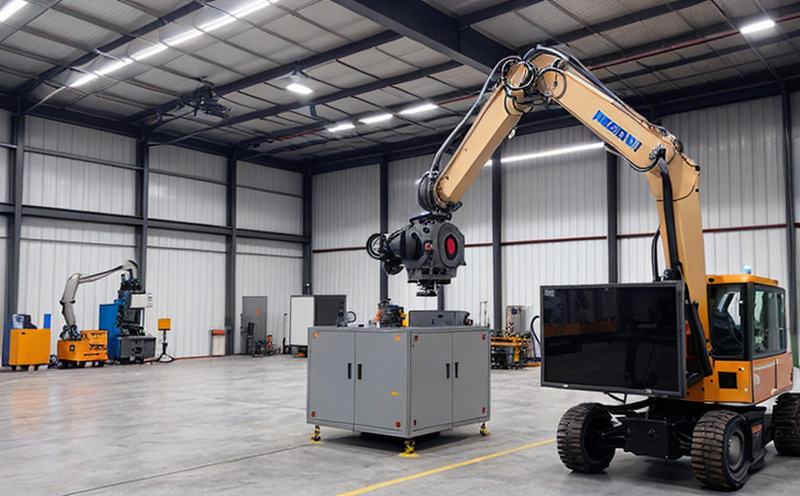ISO 10218 Industrial Robot Safeguarding and Protective Systems Testing
The ISO 10218 series of standards is pivotal in ensuring the safety and compliance of industrial robots within manufacturing environments. This standard specifically addresses safeguarding requirements for industrial robots, providing a framework to ensure that protective systems are adequate and effective.
Industrial robotics has seen exponential growth across various sectors such as automotive, electronics, logistics, and healthcare. As these applications evolve, the need for stringent safety measures increases to protect operators from potential hazards associated with robotic operations. ISO 10218-1 focuses on the design of protective systems, while ISO 10218-2 covers the functional testing and evaluation.
The standards provide detailed guidelines on how to design safeguarding mechanisms that can detect and respond appropriately to potential risks such as collisions or hazardous movements. Compliance with these standards is essential for manufacturers looking to meet regulatory requirements and ensure workplace safety.
Our laboratory specializes in conducting comprehensive ISO 10218 testing, ensuring that industrial robots are equipped with robust protective systems. We employ state-of-the-art instrumentation and skilled engineers who adhere strictly to the prescribed test protocols outlined by the standard. This ensures accurate and reliable results that can be used as a benchmark for safety compliance.
For manufacturers dealing with complex robotic systems, our services offer more than just testing; we also provide expert advice on safeguarding design considerations, helping them stay ahead of regulatory changes and industry best practices. By leveraging this expertise early in the development process, companies can minimize risks and ensure their products meet or exceed safety standards.
The benefits extend beyond compliance to include enhanced product reputation and marketability. Demonstrating adherence to international safety standards not only builds trust with customers but also positions a company as a leader in responsible innovation. Our testing services are designed to support these goals, providing detailed reports that document the robustness of safeguarding systems.
Applied Standards
| Standard | Description |
|---|---|
| ISO 10218-1:2011 | Design of protective systems and safeguarding measures for industrial robot systems. |
| ISO 10218-2:2013 | Evaluation of the effectiveness of protective systems and safeguarding measures in industrial robot systems. |
Why Choose This Test
- Ensure compliance with international safety standards.
- Protect your workforce from potential hazards.
- Enhance product reputation and marketability.
- Stay ahead of regulatory changes and industry best practices.
- Gain expert advice on safeguarding design considerations.
Use Cases and Application Examples
In the automotive sector, industrial robots are integral to assembly lines. Ensuring these systems have robust safeguarding mechanisms is crucial for preventing accidents during maintenance or unexpected malfunctions. In electronics manufacturing, where precision is paramount, ISO 10218 testing ensures that robotic arms can be safely deployed in close proximity to delicate components.
In logistics and warehousing, industrial robots handle heavy loads and perform repetitive tasks at high speeds. The safeguarding measures tested under this standard must account for the dynamic nature of these environments, ensuring they function reliably even when faced with unpredictable conditions.
The healthcare industry is increasingly adopting robotics to assist in surgeries and patient care. Here, ISO 10218 testing ensures that robotic systems are safe not only for operators but also for patients, reducing the risk of injury during procedures or interactions.





